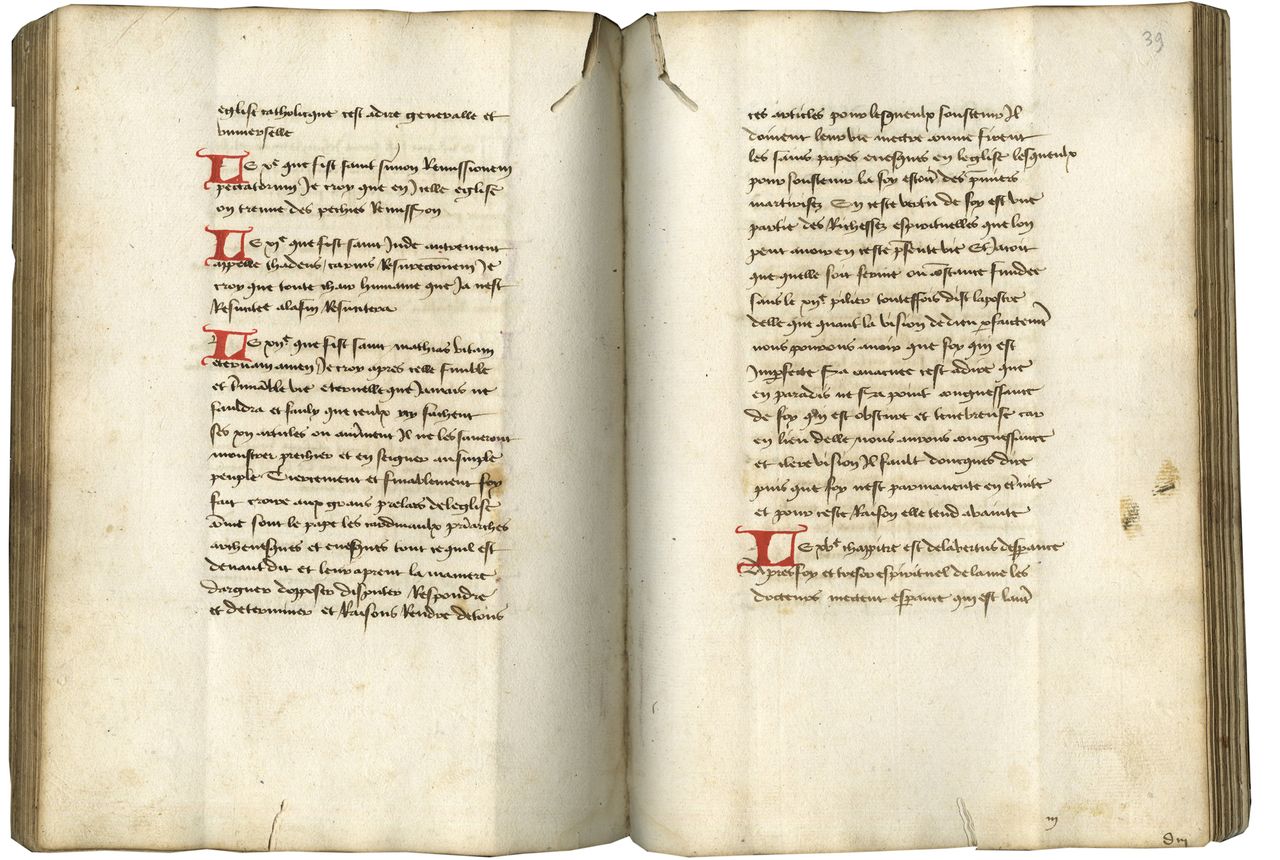


As we leaf through the manuscript, we see that some leaves are thicker than others, some have yellower tint than others, several leaves have holes and cuts, and dozens of stubs are visible in the gutters.

Lawrence, KS, University of Kansas, Kenneth Spencer Research Library, MS C195.

Scraped off writing still partly visible on folio 64r on the right. That the manuscript was rebound at some point requires one to be more careful when conducting an examination of the bookblock as there might be alterations such as added leaves or reorganized gatherings that were introduced-both knowingly and unintentionally-during the rebinding. The current binding, which is probably early modern, is leather over paper boards, with both of its covers and spine blind-tooled. When we look at MS C195, the first thing to be noticed is that the manuscript is no longer in its original binding. When it comes to understanding the history of a manuscript, codicology, the study of manuscripts as physical objects, is as vital as the study of the texts contained in the manuscripts. On the other hand, a detailed physical examination, although it will not provide all the answers about the origin of a manuscript, allows us to discover the circumstances in which the manuscript was produced and used. Identifying the text contained in a manuscript only takes us so far in terms of understanding and appreciating the book as an object. The text as it is contained in MS C195 is a copy of the third edition of the Aurora except that the beginning is missing and it does not include the chapter titled “Recapitulationes.” Beichner, argues that there were three different editions of the work, all by Petrus Riga, over this thirty-year period as well as two later redactions by Petrus’s disciple, Aegidius of Paris (also known as Egidius or Gilles de Paris, approximately 1160–1223/1224). It is thought that the Aurora was written over a long period of time at the end of the twelfth century, between 11. Also known as Peter Riga (approximately 1140–1209), Petrus was a canon of the Cathedral of Notre Dame of Reims and later a Canon Regular of the Order of St Augustine at St Denis, also in Reims, France. MS C195 contains a copy of Petrus Riga’s Aurora, a verse commentary on the Bible. This Carthusian monastery that was originally built in 1137 yet even if MS C195 was in their library at some point, it does not mean that it was made there, although it could suggest the general region in which it was created. The only hint about the past of MS C195 comes from a note dated to 1841 glued onto the front pastedown according to which the manuscript previously belonged to the library of the Charterhouse of Montrieux (Chartreuse Notre-Dame de Montrieux) in Méounes-les-Montrieux in southeastern France. Scholars utilize different evidence to determine the circumstances in which a manuscript was produced as well as its history since its production. This is not surprising the origins of many medieval manuscripts are uncertain. When, where and by whom it was made are unknown. We have very little information about the past history of Kenneth Spencer Research Library MS C195.


 0 kommentar(er)
0 kommentar(er)
